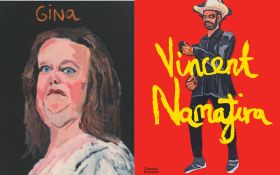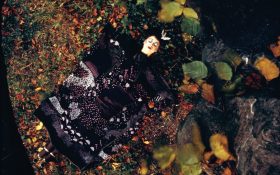Scottish school-leavers wanting to follow an art college course tend to apply to three of the four Scottish colleges (there’s a cap) without contemplating any of those south of the border, or further afield. I’m not sure why this has been so. Perhaps there’s a streak of conservatism in the Scottish character. Anyway, the procedure involves making up a portfolio of work and sending this to the college seclected as first choice on the applicant’s form. When the portfolio has been assessed it’s then passed on to the second college, and so on, before being returned to the school from which it started. By this time both the contents and enclosure are likely to be attractively worn-in. I know this because it happened to my son, but I had persuaded him to apply through UCAS to some English colleges/universities too, because I thought a bit of spread betting wouldn’t come amiss.
The only problem with this plan was that the UCAS assessment procedure was happening concurrently with that of the Scottish colleges and he wouldn’t have anything to take with him if called to interview in England. We overcame that by photocopying a selection of his work and photographing the rest, hoping that this would keep the interviewers happy. Fortunately it did. The outcome of the Scottish round (they wouldn’t entertain any photocopies or photos of work) was unfavourable but after four interviews he gained four offers from England, and was then faced with a choice instead of kicking his heels for a year. It’s always nice to have a choice.
I talked to staff at Glasgow School of Art later, and learnt that competition was always so high there that school leavers rarely stood a chance of getting in. All students do a general first year so the portfolios have to demonstrate an ability over a fairly wide range of skills, regardless of their having a pre-determined specialism in mind. I was advised that successful applicants would probably already have some extra curricular experience, possibly have shown their work at local galleries, worked with an artist as an apprentice and/or already have something of a reputation. A bit tough for school leavers brandishing nothing but school work and a clutch of Highers, even at the top grade. Oh yes, and if you wanted to walk to school every morning up Renfield Street, GSA had to be listed as first choice.
I suppose if you’re really desperate you could try changing your middle name to Rennie, but it’s a bit blatant and so obvious that it must have been done already.
The process may have changed a little. Nevertheless, this illustrates that the competition for places is extreme and I have a hunch that there are quite a lot of would-be artists of Scottish birth or residency who have missed out on UCAS and its clearing system and spent their first year after school stacking shelves in Tesco. Some will undoubtedly have been so crestfallen that they dropped out before trying again.
One thing that definitely has changed is that tuition top-up fees have rocketed in England and been scrapped in Scotland. The competition for places must be hotter than ever, now that there’s a distinct financial advantage in not studying in England. A grain of comfort: although it’s pretty fundamental to gain a degree before entering most of the design professions, with art a university rejection slip is not the end of the world. There are other ways of gaining the skills to underpin the essential motivation and creativity which can’t be taught. Inverness College, part of the UHI Millennium Institute, is offering National Qualification Units, HNCs and Diplomas in a range of subjects including Art & Design Portfolios, Acting & Peformance and Fine Art. They say that study modes are flexible from full-time to part-time, on-line and distance learning. Certain qualifying groups, like asylum seekers, can even study part-time for free. Access to the Moray College (a sister UHI establishment) BA (Hons) Fine Art course is ‘with a strong portfolio of visual work’ and the standard entry requirements of 3 Highers or 2 A Levels, in both cases at grade C, but the HNC courses don’t necessarily require this level of attainment. I’m not suggesting that this would be a possible fall-back option for unsuccessful applicants to the Scottish Art Colleges, more that it might be an equally desirable route and certainly more flexible for anyone based in the Highlands.
It seems to me that it doesn’t matter too much how you obtain the skills to enable you to properly express your inner talent. It’s not as if, say, getting a Desmond from Dundee is going to be a guaranteed passport to riches and fame. Real artists, like writers, aren’t driven by pecuniary advantage anyway (are they?). Learn the techniques, expand your horizons a little, then get on with it.
My son studied at Goldsmiths, where access to tutorial assistance fell somewhere between negligible and non-existent, and where he felt that he was merely jumping through hoops to buy an expensive piece of paper. Actually, we bought it for him. If his experience is anything like typical, as I suspect it might be, it would suggest that a costly, full-time, mainstream college degree isn’t necessarily the be all and end all.
For those who are in danger of falling through the net, listen to Kate Bush. She says “Don’t give up” and, as she’s a goddess, it would be sensible for floundering students to take note. Art education is available across a broad spectrum. It would still be wise to be selective, but also remember that the very bottom line is this: What’s art got to do with passing exams anyway?




